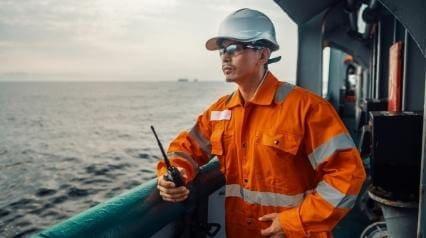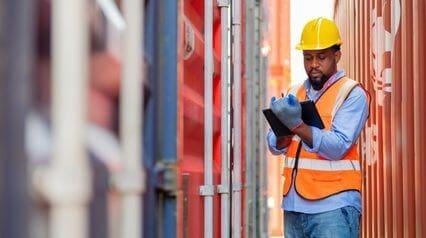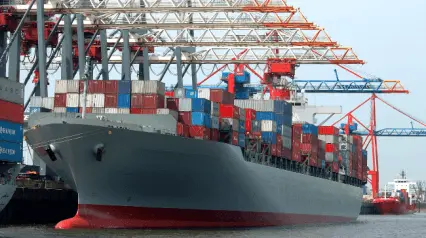What is Maritime Safety?
Maritime safety is the protection of the crew and passengers aboard vessels, as well as those living or working near bodies of water, from hazards and the risk of injury or fatality. An example of maritime safety according to the Occupational Safety and Health Administration (OSHA) is the provision of Personal Flotation Devices (PFDs), which aid in the recovery of Persons In Water (PIWs) who are at risk of hypothermia, drowning, and even death.
What is the Difference Between Maritime Security and Maritime Safety?
While often used interchangeably, maritime security and maritime safety are slightly different from each other. Maritime security largely focuses on the protection of vessels and their cargo from external threats such as smuggling and piracy. On the other hand, the goal of maritime safety is to protect people, and in some cases the environment, from naturally-occurring or accidental hazards. These hazards, however, can be just as or even more harmful than external threats if they are unreported, ignored, or unaddressed by the vessel’s crew and captain.
Importance
Maritime safety is important because neglecting it can lead to unfathomable disasters such as the fatal tanker explosion of the Bow Mariner, the sinking of the Motor Ship (MS) Estonia, the MS Herald of Free Enterprise accident, and the sinking of the Royal Mail Ship (RMS) Titanic.
Aside from maritime accident prevention, another key reason why maritime safety should be prioritized is that it can actively help lower the risk profiles of ships. Ship risk profiles are used by the Paris Memorandum of Understanding (MoU) on Port State Control to determine the intervals between the required periodic inspections. A Low Risk Ship (LRS) can have an inspection interval of 3 years, while a High Risk Ship (HRS) may need to be inspected every 5 months.
The Paris MoU’s New Inspection Regime (NIR), which includes ship risk profiling, applies to its 27 member states. These include, among others, Canada, the United Kingdom, and most European countries. In the United States, a domestic vessel may fail the mandatory vessel inspection if there is any indication that the navigation of the vessel is unsafe.
What are Maritime Standards?
Maritime standards are the industry-accepted rules that govern maritime safety and security. These rules are enforced by the International Maritime Organization (IMO) as well as by other international, regional, or national organizations, associations, and agencies. Below are just some of the maritime standards in place today:
International Convention for the Safety of Life at Sea (SOLAS)
SOLAS is an international treaty that, according to the IMO, was created “in response to the Titanic disaster.” Today, over 160 countries adhere to the current version, SOLAS 1974. It covers nearly all aspects of maritime safety, including:
- the construction of ships (i.e., subdivision, stability, fire protection, etc.);
- the provision of life-saving appliances such as lifeboats and life-jackets;
- the use of radiotelegraphy and radiotelephony (radio communication); and
- the implementation of safety in navigation (e.g., in manning, routing, signaling).
SOLAS 1974 also has chapters dedicated to the carriage of grain, the carriage of dangerous goods, and nuclear ships.
On the other hand, the ISO 27991 standard is created to provide guidance on communicating between a Marine Evacuation System (MES) and the platform or survival craft it is attached to, as required by the International Convention for the Safety of Life at Sea (SOLAS) regulation III/6.4.4.
International Ship and Port Facility Security (ISPS) Code
The ISPS Code applies to vessels on international voyages and the port facilities serving them. The main components of the ISPS Code are the following:
- the completion of a Declaration of Security when required by the government or requested by a ship;
- the development of a ship security plan and a port facility security plan;
- the use of ship security assessments and port facility security assessments;
- the participation in training, drills, and exercises on ship security and port security; and
- the designation of a ship security officer, a port facility security officer, and a shipping company security officer.
Global Maritime Distress and Safety System (GMDSS)
When traveling on international voyages or in the open sea, cargo ships of 300 tons and over, along with all passenger ships carrying more than 12 passengers, must comply with GMDSS requirements (according to the Federal Communications Commission).
Though GMDSS requirements differ depending on the sea area the vessel is operating in, all vessels that need to comply must have the following:
- a 406 megahertz (MHz) Emergency Position Indicating Radio Beacon;
- a Very High Frequency (VHF) radio that can transmit and receive Digital Selective Calling (DSC) and radiotelephony;
- a NAVigational TEleX (NAVTEX) receiver;
- a Search and Rescue Transponder (SART);
- two-way VHF portable radios; and
- radio equipment maintenance using approved methods.
Standards of Training, Certification and Watchkeeping (STCW)
The International Convention on Standards of Certification and Watchkeeping for Seafarers (otherwise known as STCW, the STCW Code, or the STCW Convention) requires that crew members receive adequate training on topics that are relevant to their duties. Training must be validated in the form of required certificates, endorsements, and/or documented evidence.
While there are specific requirements for each rank, generally all crew members must have a national certificate of competence with them onboard. Another important provision of STCW, particularly the Manila Amendments of 2010, is the use of distance learning and e-learning.
Training
With the plethora of requirements, standards, and guidelines, maritime safety training can be difficult to navigate. Learn how a specialized provider of maritime solutions revamped their training approach using a mobile-first training tool that makes organization-wide learning simpler and more flexible.
Maritime Safety with SafetyCulture (formerly iAuditor)
Maritime industry professionals can use SafetyCulture, a digital platform with the following features for maritime safety:
- Develop a maritime safety management system
- Use mobile-ready checklists for Ship Inspection Report Programme (SIRE), Port State Control (PSC), vessel arrival and departure, safety equipment, and more
- Track compliance with maritime regulations using Analytics
Get started with SafetyCulture for free or take a look at our collection of maritime checklists below.



